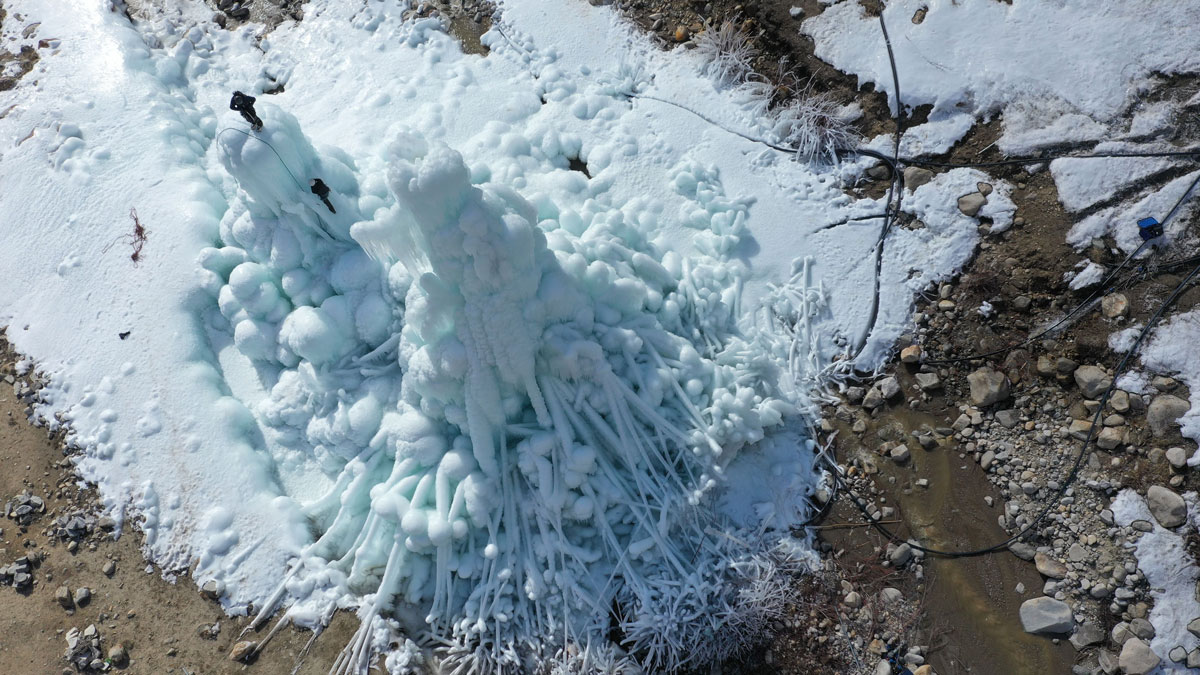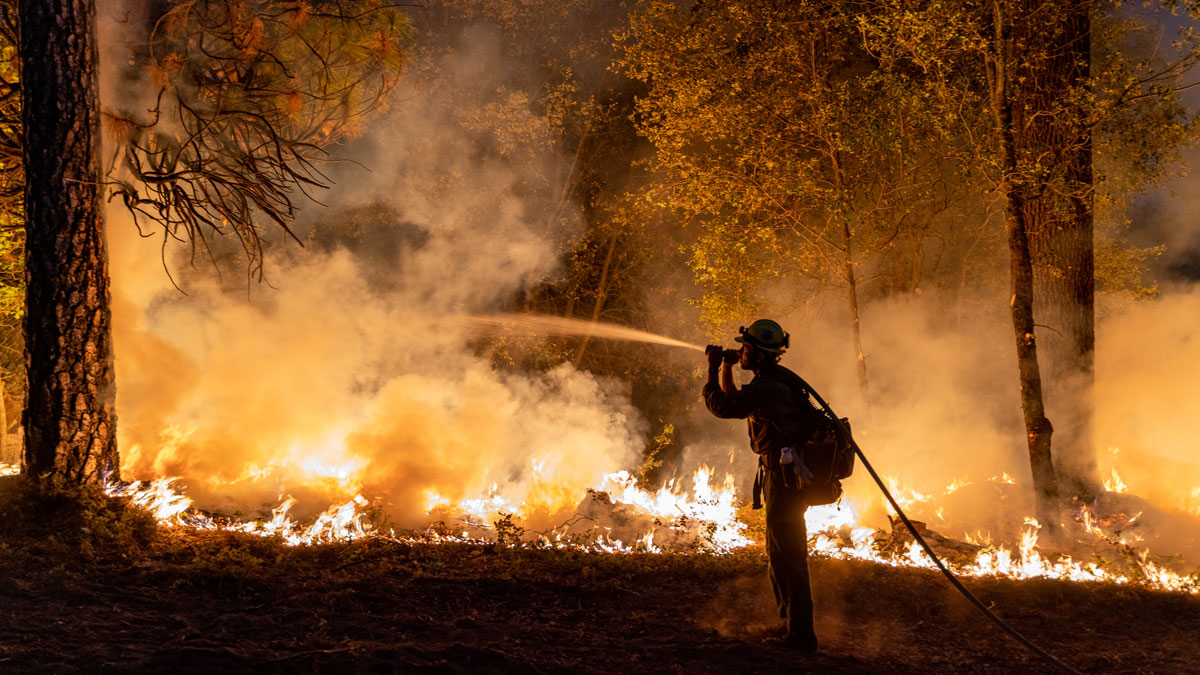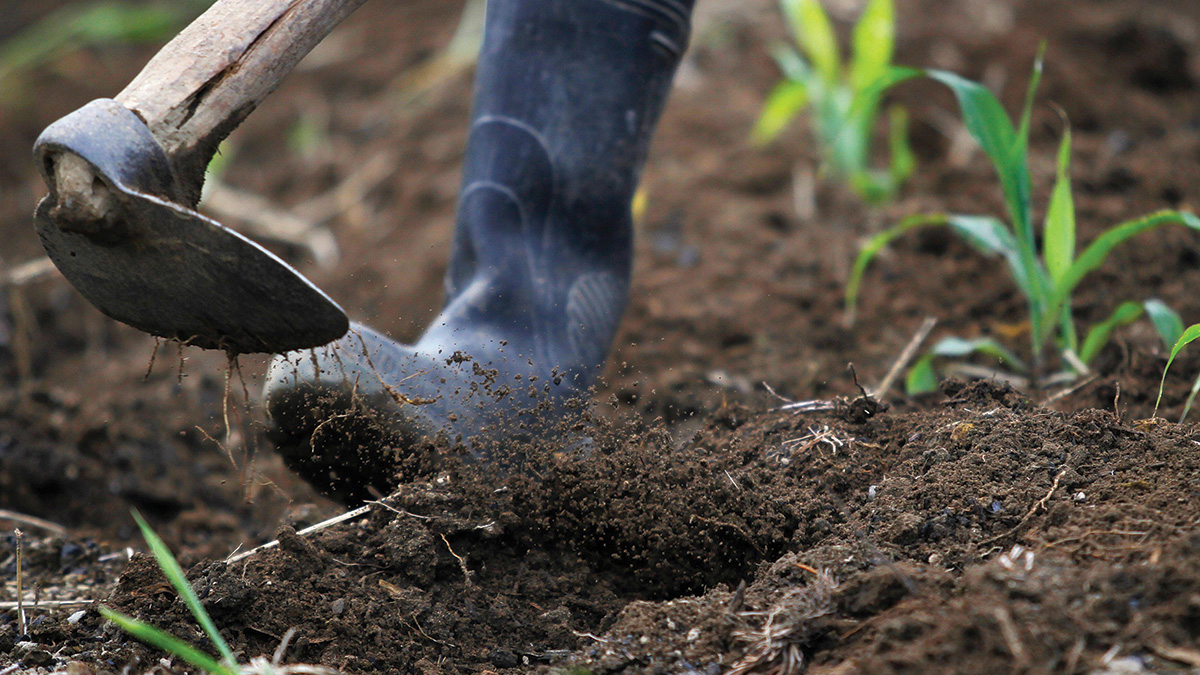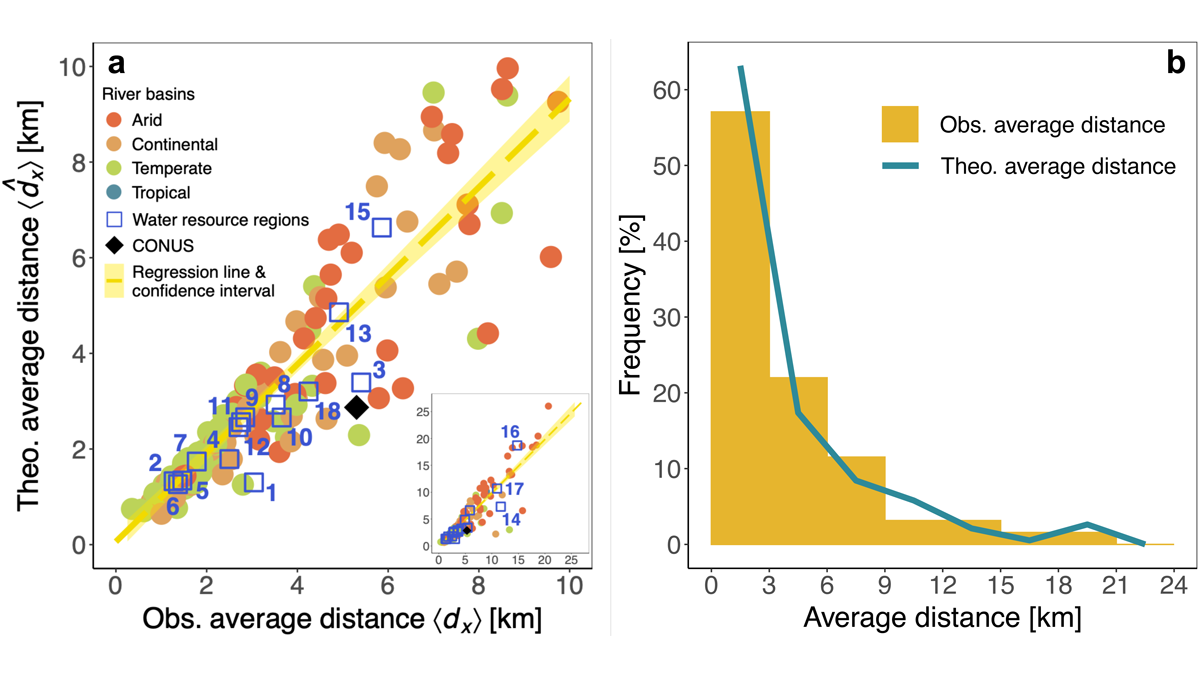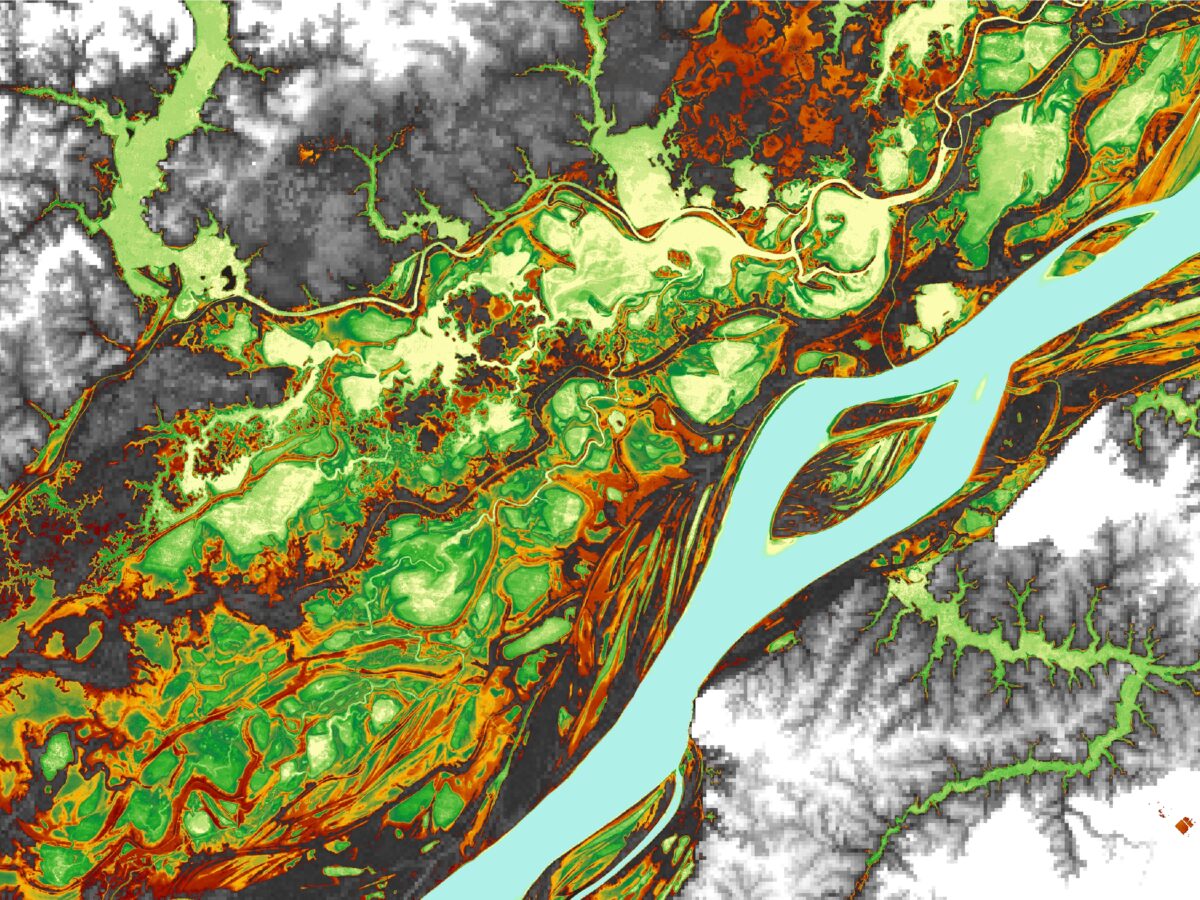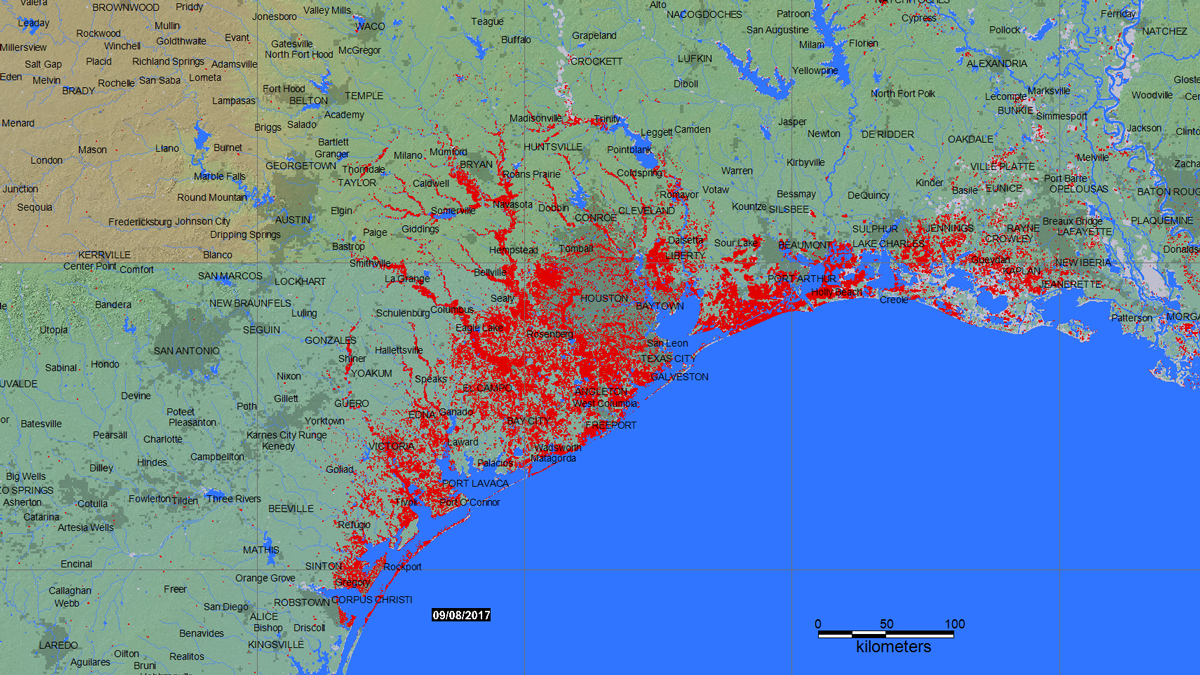According to a new study, warmer temperatures and high soil nitrogen levels are causing Earth’s largest land biome to advance northward.
remote sensing
Ice Towers May Hold Promise—and Water—for Some Cold, Dry Places
A new study that cues into the formation of ice cones for storing glacial meltwater reveals how the structures can be built more efficiently and which climatic conditions work best.
Warmer Nights Are Adding Fuel to Nighttime Fires
Cool, moist nights are rarer than they were a few decades ago, and that’s giving wildfires an edge over crews trying to hold fire lines.
The Nutrient-Rich Legacy in the Amazon’s Dark Earths
Fertile terra preta soils were created through centuries of carefully managed land use. Scientists are taking cues from these soils to better sequester carbon and improve soil for agriculture.
Urbanization and Surface Water Loss Go Together
Mapping surface water loss from satellite data confirms decreases away from urban areas. A simple exponential distance-decay model approximates the impact of urbanization.
El sorprendente alcance de las gigantescas ondas atmosféricas de Tonga
Los resultados empiezan a llegar: Científicos de alrededor del mundo explican las gigantescas ondas atmosféricas que emanaron de la erupción del volcán Hunga Tonga-Hunga Ha’apai.
The Surprising Reach of Tonga’s Giant Atmospheric Waves
Results are beginning to pour in: Scientists around the globe explain the massive atmospheric waves that emanated from the Hunga Tonga–Hunga Ha’apai eruption.
Amazon Water Cycle Observed from Space
Satellite observations offer invaluable insights into hydrological processes and environmental change in the Amazon.
The Perspective from Space Unlocks the Amazon Water Cycle
Satellite imaging and remote sensing offer unique insights into the Amazon’s complex hydrology. A new review summarizes decades of findings and charts a path forward for new remote sensing missions.
Remote Sensing Could Predict Well Water Quality After Floods
After a flood, most people rely on officials to test public water sources. Private well owners are on their own, with little data to guide testing and treatment. New research seeks to change that.


